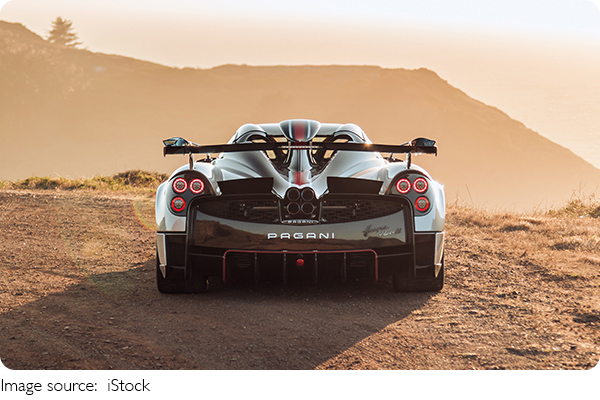Sports Car Evolution

As a high-performance automobile, car enthusiasts and speed lovers have always favored sports cars.
The concept of a sports car entails sleek body lines, low height, excellent handling, and robust engines, with its primary focus on pushing speed limits.
The purpose of a sports car is to "bring racing into everyday life," providing enthusiasts with the opportunity to experience the thrill of driving akin to professional racers. Therefore, sports cars can be understood as the "civilian version of racing cars," imbued with a sense of athleticism.
Traditionally, sports cars feature a two-door body style, with only left and right doors, either seating two occupants or in a 2+2 configuration, and a convertible soft-top or hardtop roof. Sports cars typically have two seats, lightweight bodies, and more powerful engines than regular cars, resulting in excellent acceleration and higher speeds.
In the historical context of European sports cars, almost all heavyweight sports car designs originated from the United Kingdom and Italy. French innovation predominantly manifested in conventional passenger cars, while German engineering often prioritized functionality over aesthetic pursuits.
So, what distinguishes British and Italian designs? The former seamlessly blends a passion for racing with British aristocratic charm. At the same time, the latter showcases innate Italian aesthetic sensibilities, exerting a profound influence on sports car design and even the entire automotive industry.
In the 1940s and 1950s, Jaguar introduced the XK120 sports car in the UK, while Aston Martin launched the DB1, marking the beginning of the legendary DB series. Maserati A6/1500 and Alfa Romeo 6c 2500 were also introduced on the sunny shores of the Italian Peninsula. However, car exterior design wasn't given much attention then, with most sports cars continuing pre-war design philosophies, albeit with some nascent streamlined elements.
The emergence of the FIAT 8V in 1952 marked a groundbreaking moment in car design. This sports car departed entirely from carriage-inspired design philosophies, featuring a slender body and graceful curves. It aerodynamically emphasized rear spoilers, embodying a futuristic design ethos reflecting Italians' aesthetic pursuits.
In 1960, the Ferrari 250GT debuted, signifying a significant milestone for Ferrari, not only pulling the company out of financial crisis but also solidifying its position among top sports car manufacturers.
In 1961, another groundbreaking sports car, the Jaguar E-Type, was born in the UK. This elegant sports car directly inherited the low, sleek body of the D-type racing car and the rounded wheel arches of the XK series. When viewed from above, its silhouette resembled a Coke bottle, earning praise even from Enzo Ferrari as the "most beautiful car ever made."
Entering the 1970s, the automotive industry faced significant challenges due to the oil crisis, leading to a subtle shift in European sports car design.
British car manufacturers introduced a series of lightweight, small sports cars in the 1970s. These compact sports cars boasted light bodies, offering driving pleasure without relying on high-displacement engines. Representative models include the Lotus Elan and MG Midget 1500.
On the other hand, Italians continued to innovate in expensive supercars. Gandini, for Lamborghini, designed the successor to the Miura, the Countach, retaining many straight lines to create a low, sharp profile. However, amidst the oil crisis, the Countach failed to bring the expected profits to the company, plunging it into a slump.
After the oil crisis subsided, European sports car manufacturers faced fierce competition from Japanese competitors. British small sports cars suffered a comprehensive defeat in this competition, leaving Europeans seemingly only with the supercar market.
In 1984, Ferrari, with the assistance of Pininfarina Design Studio, introduced the Testarossa and the new 512 TR. The innovative design emphasizing the mid-engine intake on the side of the body was quickly emulated by TOYOTA's MR-2.
Not willing to be outdone by the Italians, the British decided to reclaim their honor. In 1992, the Jaguar XJ220 was born. This supercar was designed to break production car speed records, featuring a deficient, elongated, streamlined body. However, the XJ220 ultimately fell short of its 220 mph (349.4 km/h) target, reaching a top speed of only 217.1 mph (349.4 km/h).
Fortunately, the subsequent McLaren F1 set an astonishing speed record of 372 km/h, a record that would stand until 2005, when it was broken by the Bugatti Veyron 16.4. It's worth noting that the McLaren F1 features three seats, with the driver's seat positioned centrally.

Entering the 21st century, the automotive landscape underwent subtle changes. Large automotive groups acquired many European brands that once specialized in sports car manufacturing. However, these brands continue producing sports cars with distinctive design characteristics.
Ferrari still ingeniously integrates aerodynamics into its exquisite exterior lines, Lamborghini's use of straight lines becomes more aggressive, and Alfa Romeo's iconic triangular grille and graceful lines remain unparalleled. At the same time, conglomerates like BMW continue to explore the possibilities of future sports car design.

 · Vehicle Team
· Vehicle Team